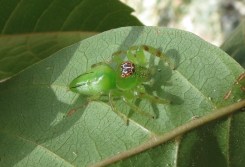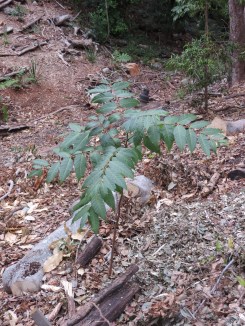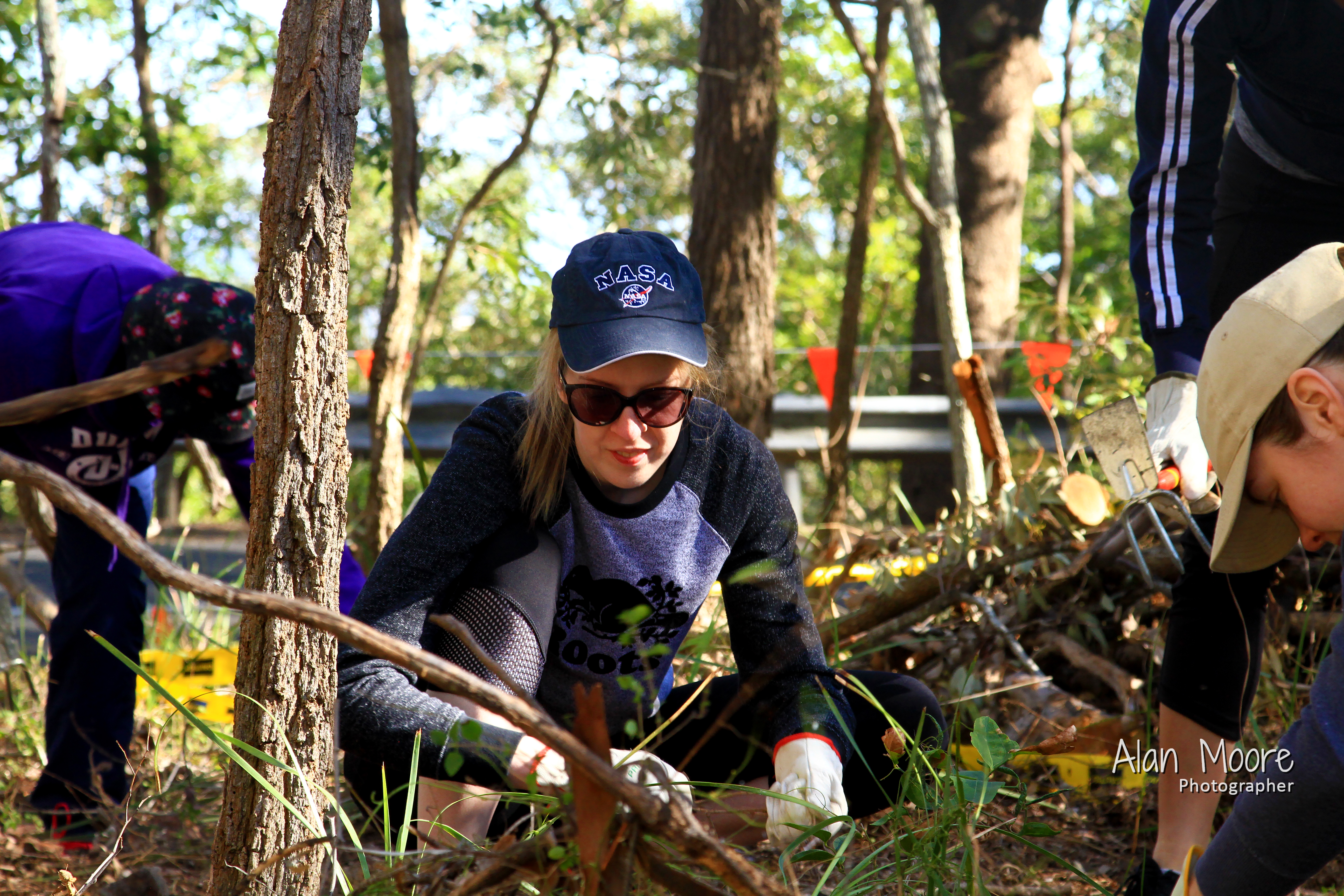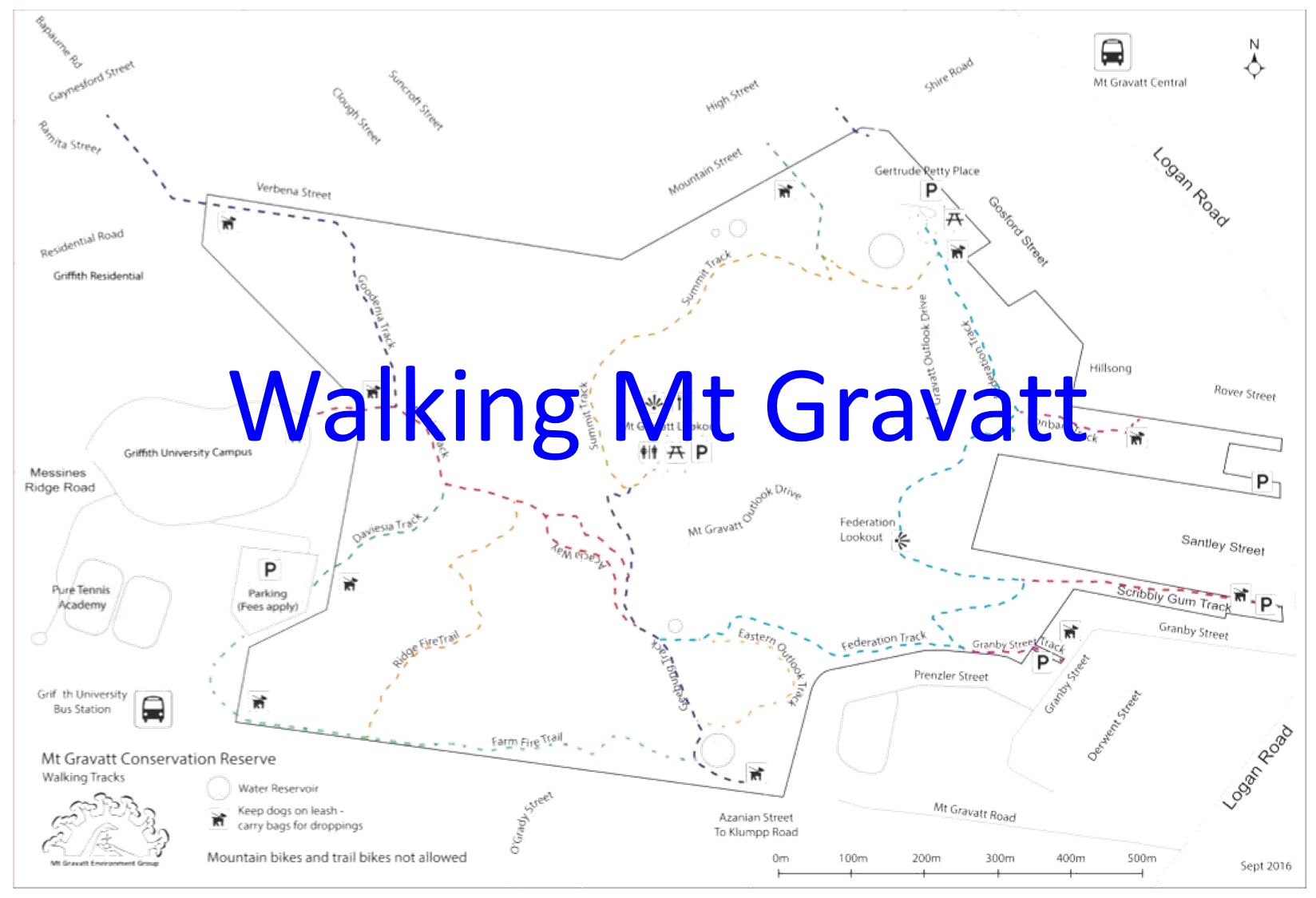By: Michael Fox
Thursday last week the Mt Gravatt PCYC Bush Restorers joined us at Roly Chapman Bushcare to clear weed regrowth and plant 160 vines, grasses and shrubs to create an edge seal along the primary school fence.
Restoration work in Roly Chapman is part of the Mimosa Creek Precinct
Landscape Plan to link Mt Gravatt Conservation Reserve with Bulimba Creek.
An edge seal is a barrier to protect natural bushland from weed invasion. For example, reduce the feathery seeds from the yellow flowering Flatweed (Catsear) Hypochaeris radicata blowing over from the school oval.
Clearing weed regrowth was required to prepare for planting. I started by explaining the Bradley Method of regeneration:
- Word from strength – work from least weed infected to worst infected;
- Minimise soil disturbance to maintain the diverse life in the soil
The Bradley Method does require skilled workers. So it was a real pleasure to work with two expert Weed Eradicators to remove the deep-rooted Flatweed. The ground was soft from recent rain so with carefully pulling the the weed vertically allowed removal roots and all with minimal disturbance to soil.
Vines
Bushes
Grass/Sedge/Rush
- Barbed Wire Grass Cymbopogon refractus
- Kangaroo Grass Themeda australis
- Blueberry Lily Dianella longifolia
- Tall Sedge Carex appressa
- Common Rush Juncus usitatus
Plants were selected from species already found in Roly Chapman Bushland Reserve. Vines Hardenbergia violacea and Smilax australis are a good way to hid a chain-wire fence and provide food for butterfly caterpillar and fruit for fruit eating birds. Growing to 3 metres with a 2 metre spread and reddish green foliage the Coffee Bush Breynia oblongifolia is an attractive garden feeding butterfly caterpillars and decorative Green Jewel Bugs Lampromicra senator.
Grasses like Barbed Wire Grass Cymbopogon refractus and Kangaroo Grass Themeda australis will create an edge seal below the shrubs and feed seed eating birds. Sedges and rushes like Tall Sedge Carex appressa and Common Rush Juncus usitatus thrive along the fence line where run off from the school oval creates a damp habitat most of the year.
Thank you Mt Gravatt PCYC Bush Restorers … looking forward to welcoming you back in 2018.


























































